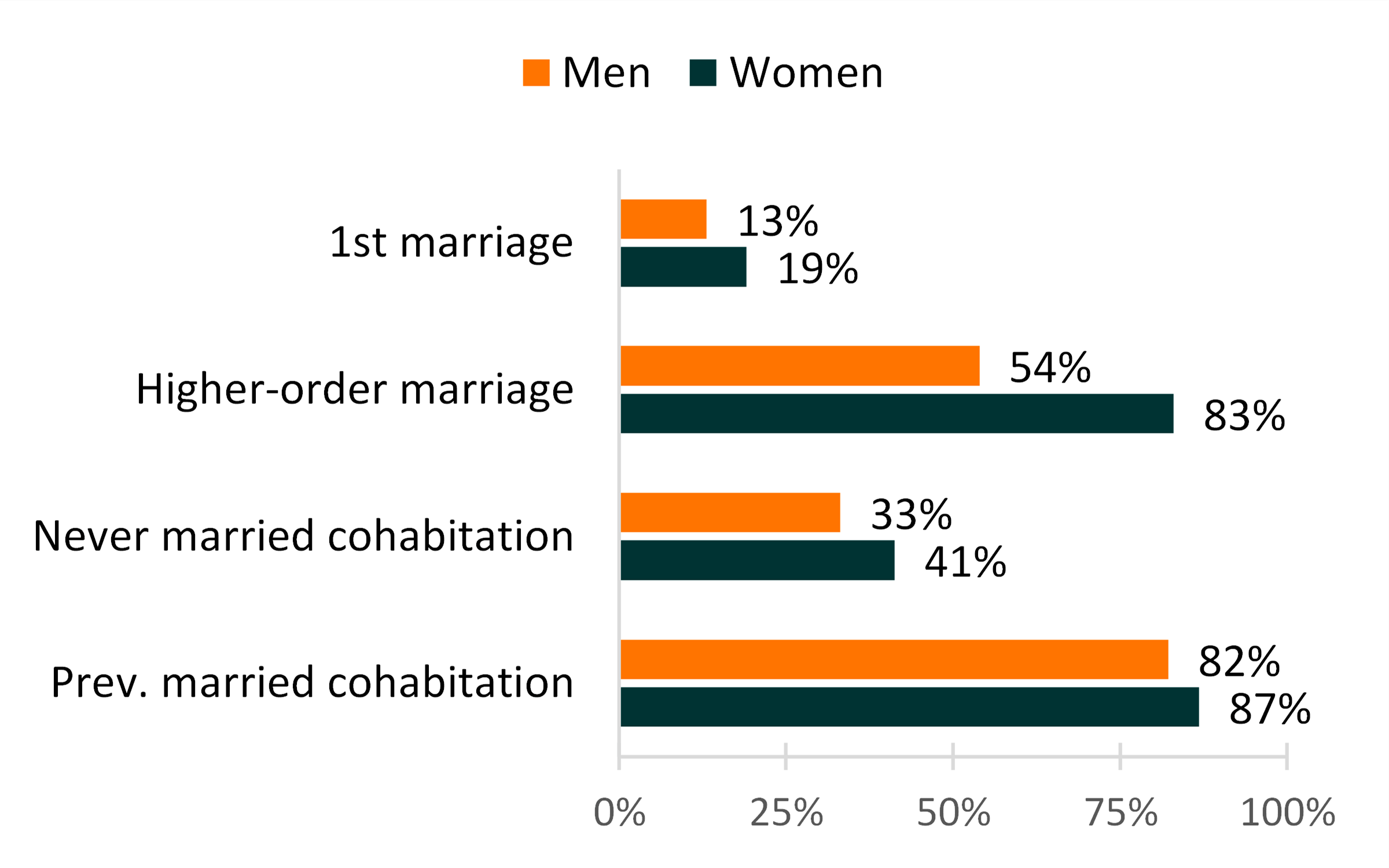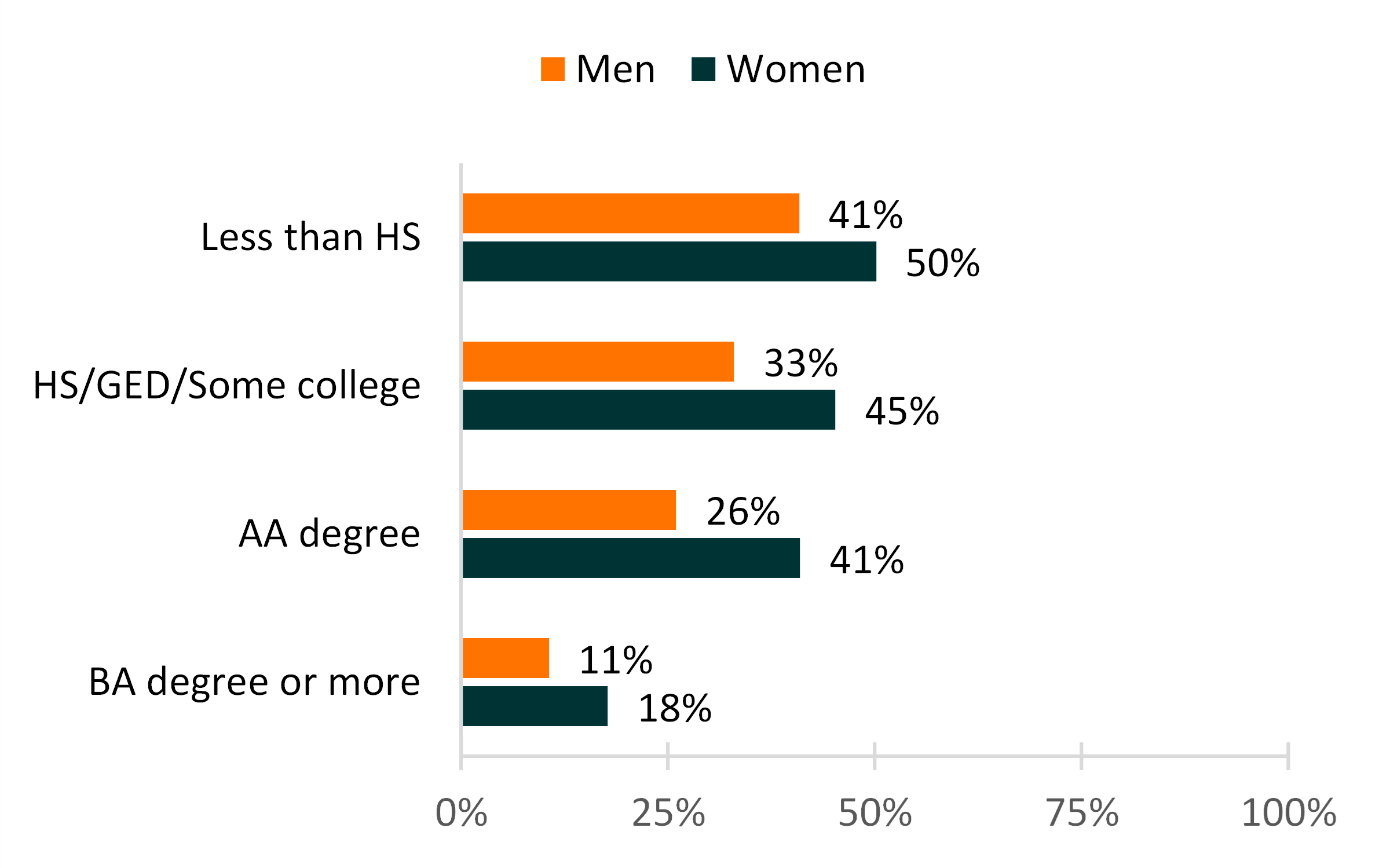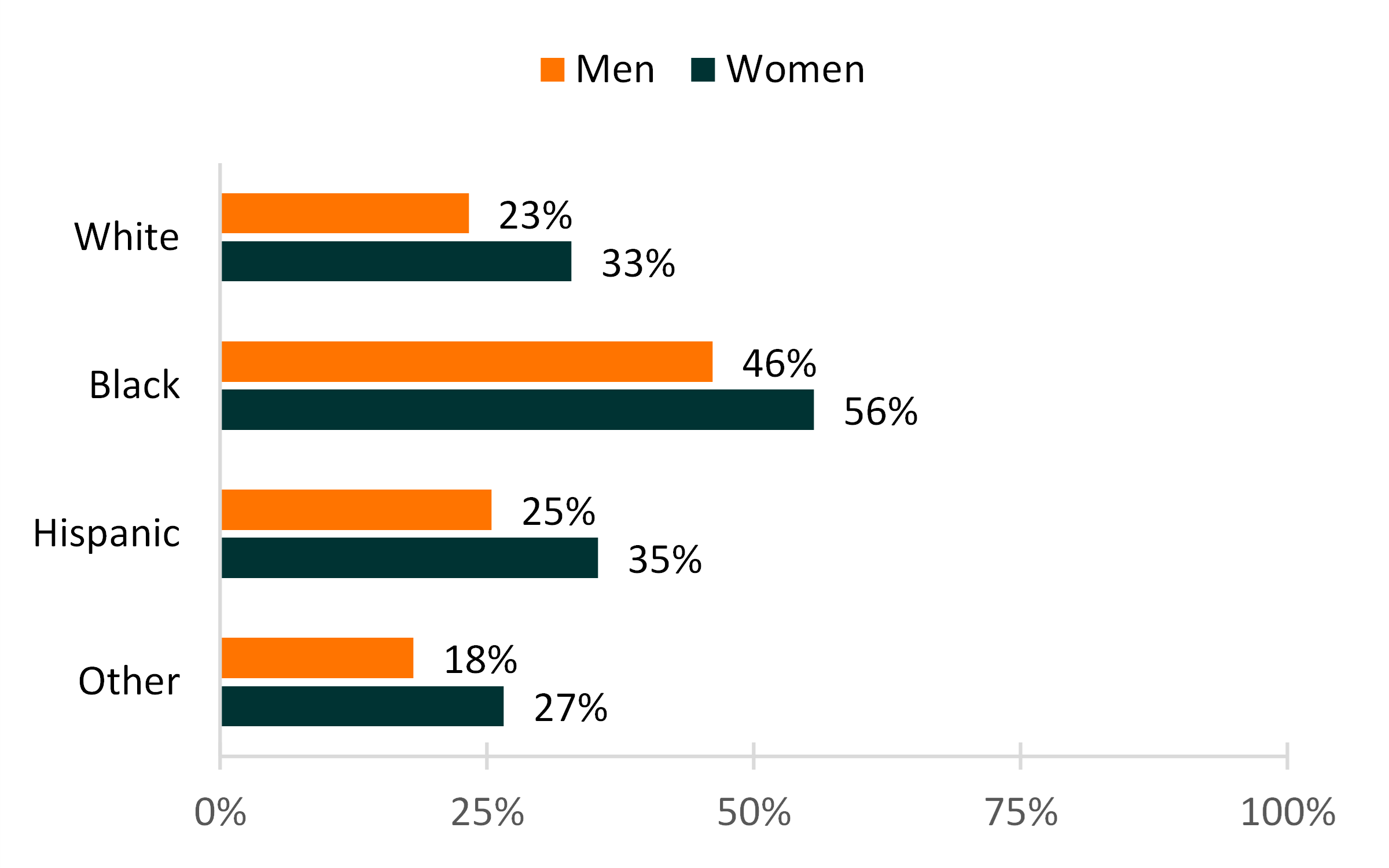Variation in Stepfamilies Among Currently Cohabiting Men and Women Under 50
Family Profile No. 22, 2021
Author: Karen B. Guzzo
Among women, an increasing proportion of current unions are stepfamilies—unions in which one or both partners had children from a prior relationship (FP-21-21). In this profile, we consider how the share of men’s and women’s coresidential unions that are stepfamilies varies by union type and marital history, educational attainment, and race/ethnicity. We examine men and women under age 50 who are currently living with a partner (married or cohabiting) using data from the 2015-2019 cycles of the National Survey of Family Growth (NSFG), which represent the year 2017 when weighted.
- Overall, the share of women’s unions that are stepfamilies (35%) was higher than the share among men (25%), not shown.
- This holds true regardless of union type and marital history, educational attainment, or race/ethnicity.
Variation across Union Type and Marital History, by Gender
- For union type and marital history, the absolute gender gap was largest for those in a higher-order marriage, with 54% of men in a 2nd or later marriage in a stepfamily compared to 83% of women – a difference of 29 percentage points.
- Stepfamilies were least common among 1st marriages and most common among previously married cohabiting men and women.
- Among never married cohabiting men and women, 33% and 41%, respectively, were in stepfamilies.
- Partnered women with a previous marriage had high shares living in a stepfamily, at 83% of those in a remarriage and 87% of those in a cohabitation.
Figure 1. Stepfamily Share of Unions, by Union Type and Gender

Variation across Education, by Gender
- Across education levels, the absolute gender gap in stepfamilies was largest among those with an associate degree – among partnered men, 26% were living in stepfamilies compared to 41% among women.
- Of unions among those without a high school degree, four in ten were stepfamilies for men and one half were stepfamilies for women.
- Less than one fifth of currently cohabiting or married men and women with a college degree or more were in a stepfamily, at 11% and 18% respectively.
Figure 2. Stepfamily Share of Unions, by Education and Gender

Variation across Race-Ethnicity, by Gender
- The absolute gender gap varied little by race-ethnicity, with the share of cohabiting and married women in a stepfamily about 10 percentage points higher than their male counterparts across groups.
- The share of stepfamily unions across race-ethnicity and gender was highest for Black women, at 56%, and lowest for ‘Other’ race men, at 18%.
- Stepfamily prevalence by gender was similar among Whites and Hispanics – about one fourth of men and about one third of women were in a stepfamily.
- Less than one fifth of ‘Other’ race men in a union were in a stepfamily compared to just over one fourth of ‘Other’ race women.
Figure 3. Stepfamily Share of Unions, by Race-Ethnicity and Gender


Overall, the share of women's unions that are stepfamilies (35%) was higher than the share among men (25%).

Data Sources:
National Center for Health Statistics (NCHS). National Survey of Family Growth Public-Use Data and Documentation. Hyattsville, MD: CDC National Center for Health Statistics. https://www.cdc.gov/nchs/nsfg/index.htm
References:
Guzzo, K. B. (2021). Stepfamilies among currently cohabiting and married women under 45, 1988 and 2017. Family Profiles, FP-21-21. Bowling Green, OH: National Center for Family & Marriage Research. https://doi.org/10.25035/ncfmr/fp-21-21
Suggested Citation:
Guzzo, K. B. (2021). Variation in stepfamilies among currently cohabiting and married men and women under 50. Family Profiles, FP-21-22. Bowling Green, OH: National Center for Family & Marriage Research. https://doi.org/10.25035/ncfmr/fp-21-22
Updated: 11/07/2025 04:02PM


